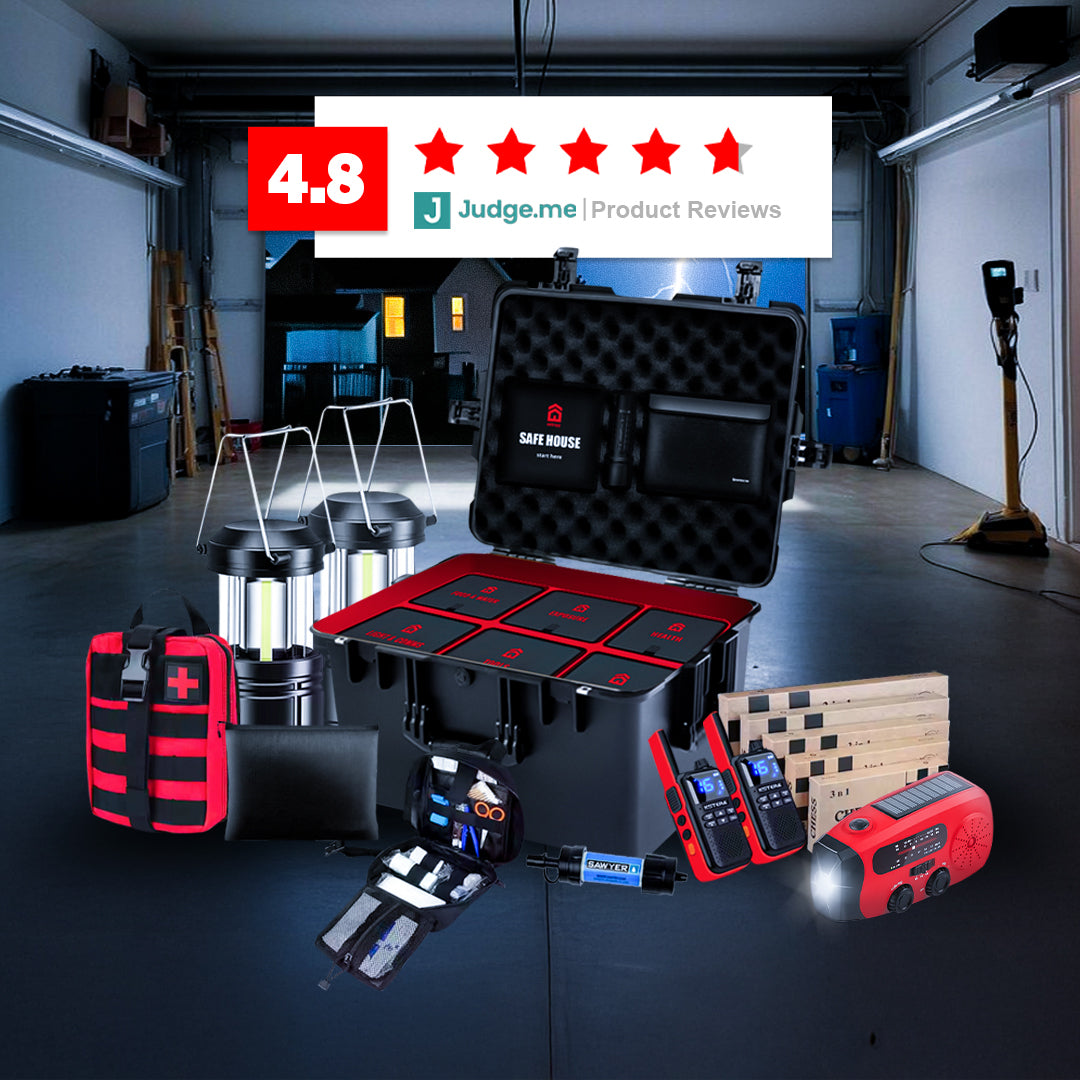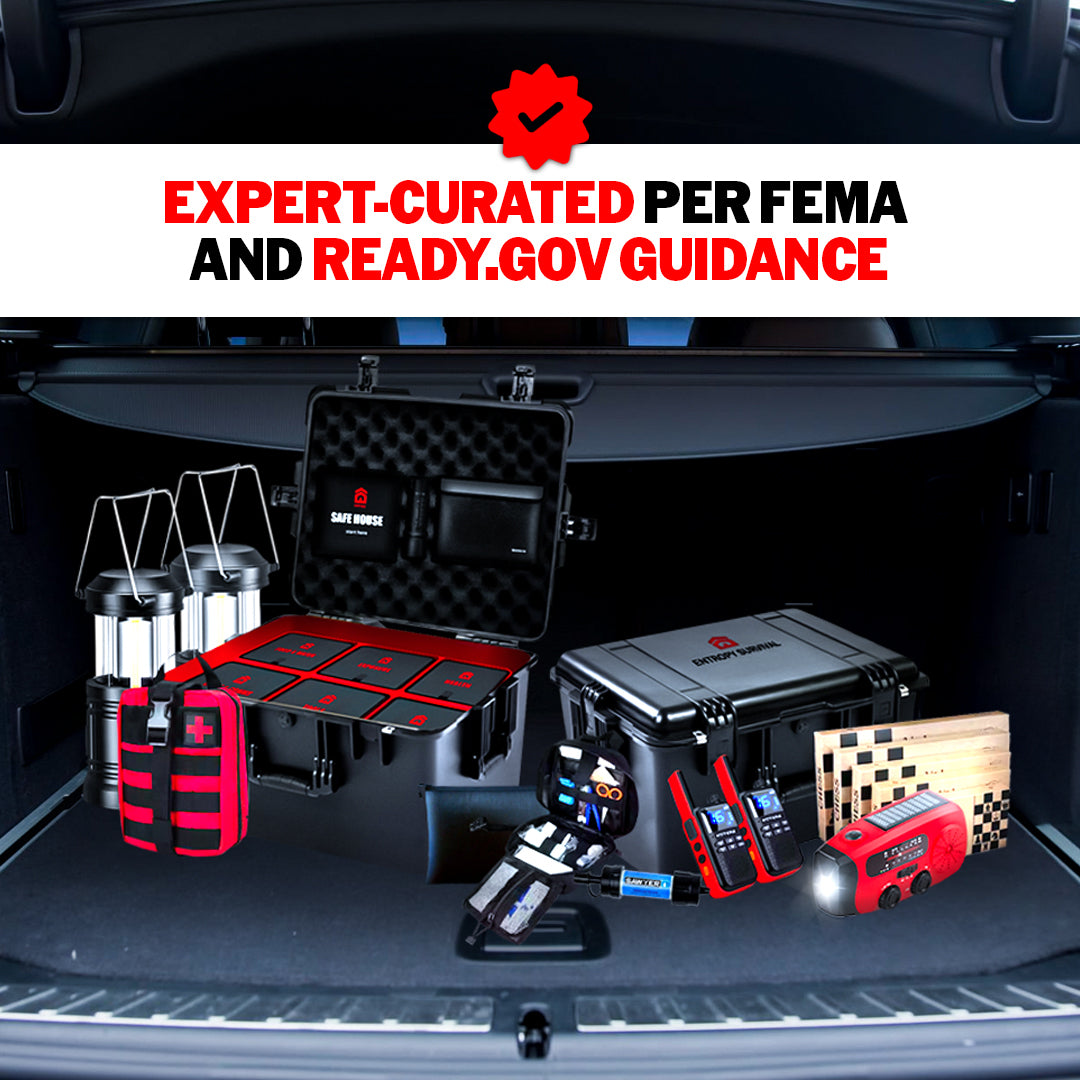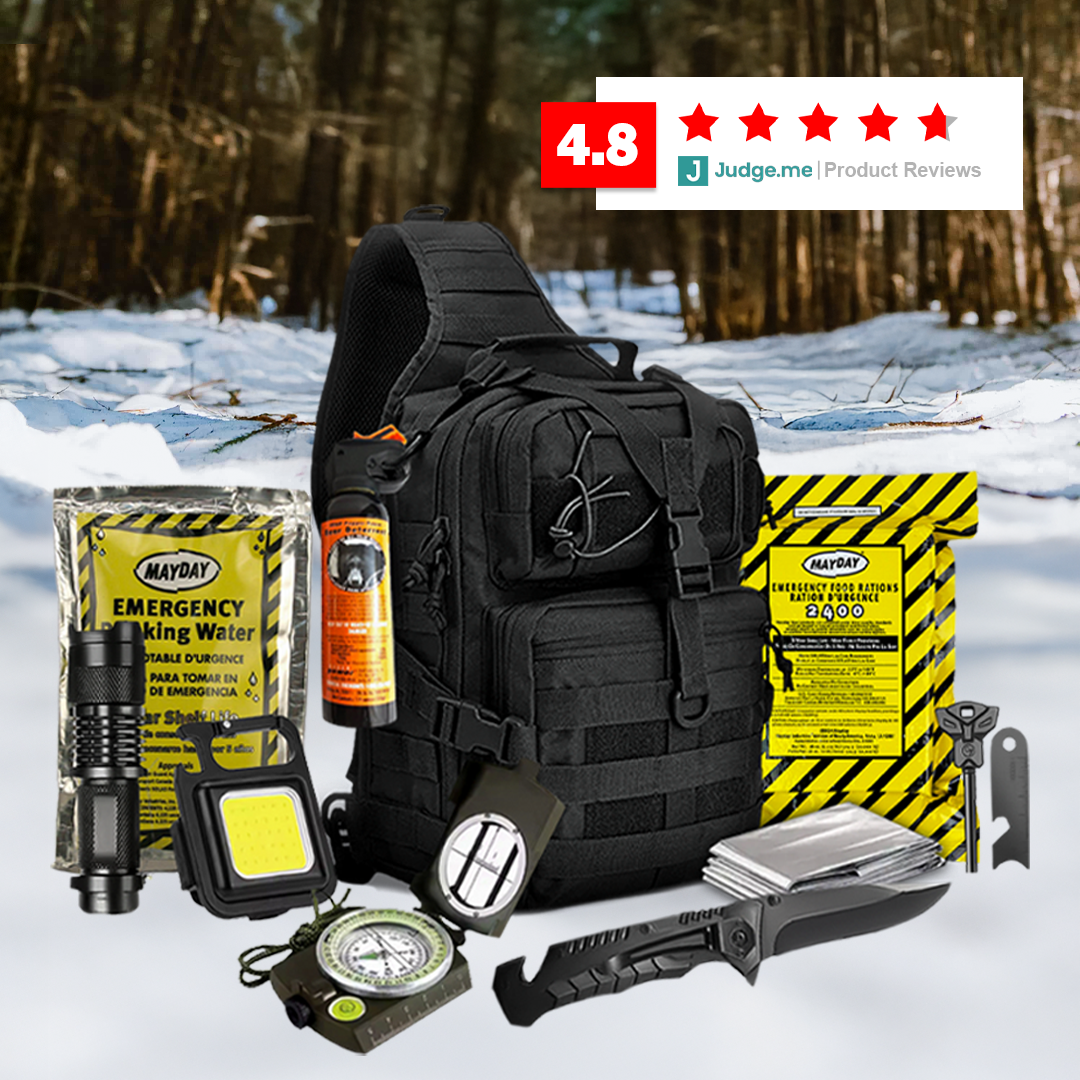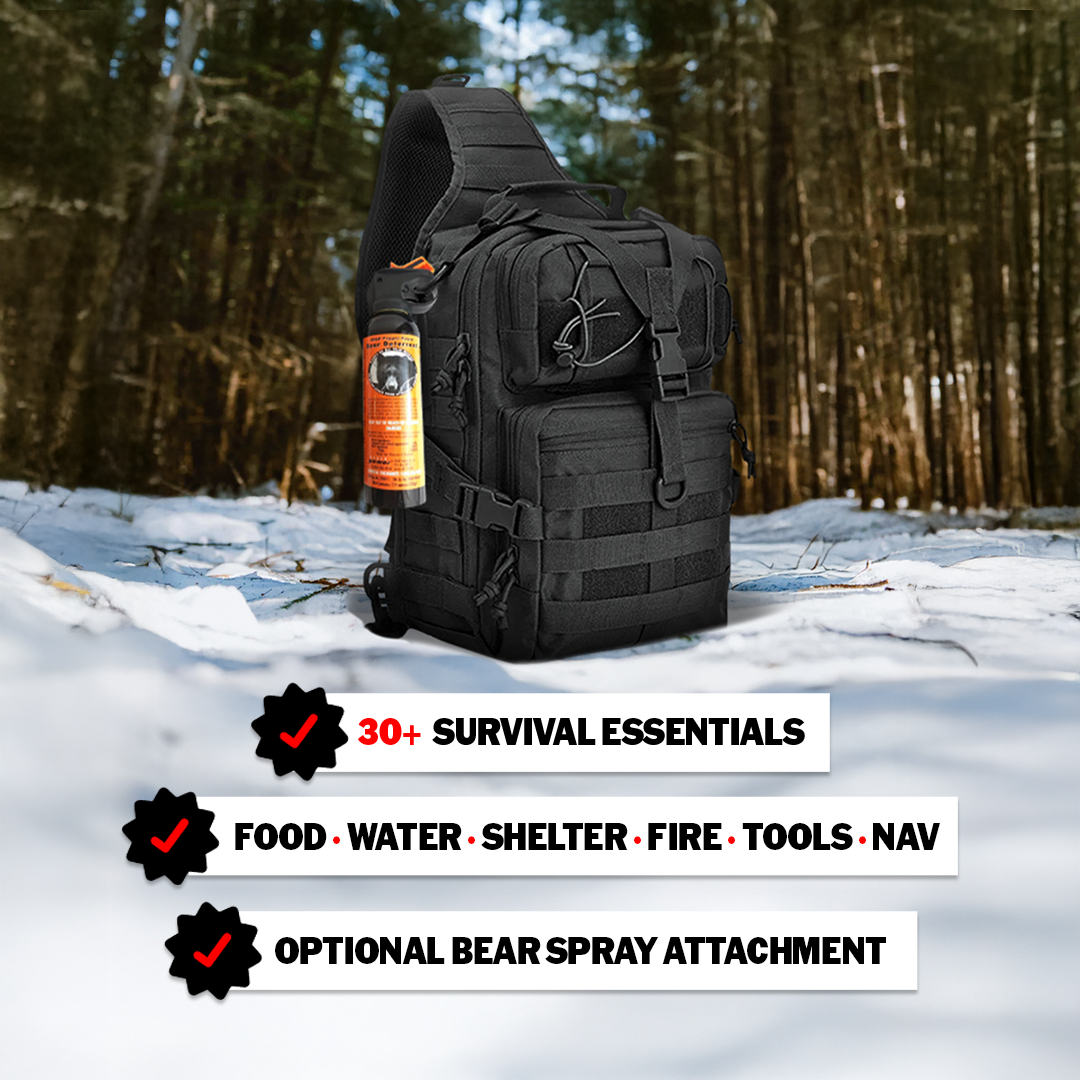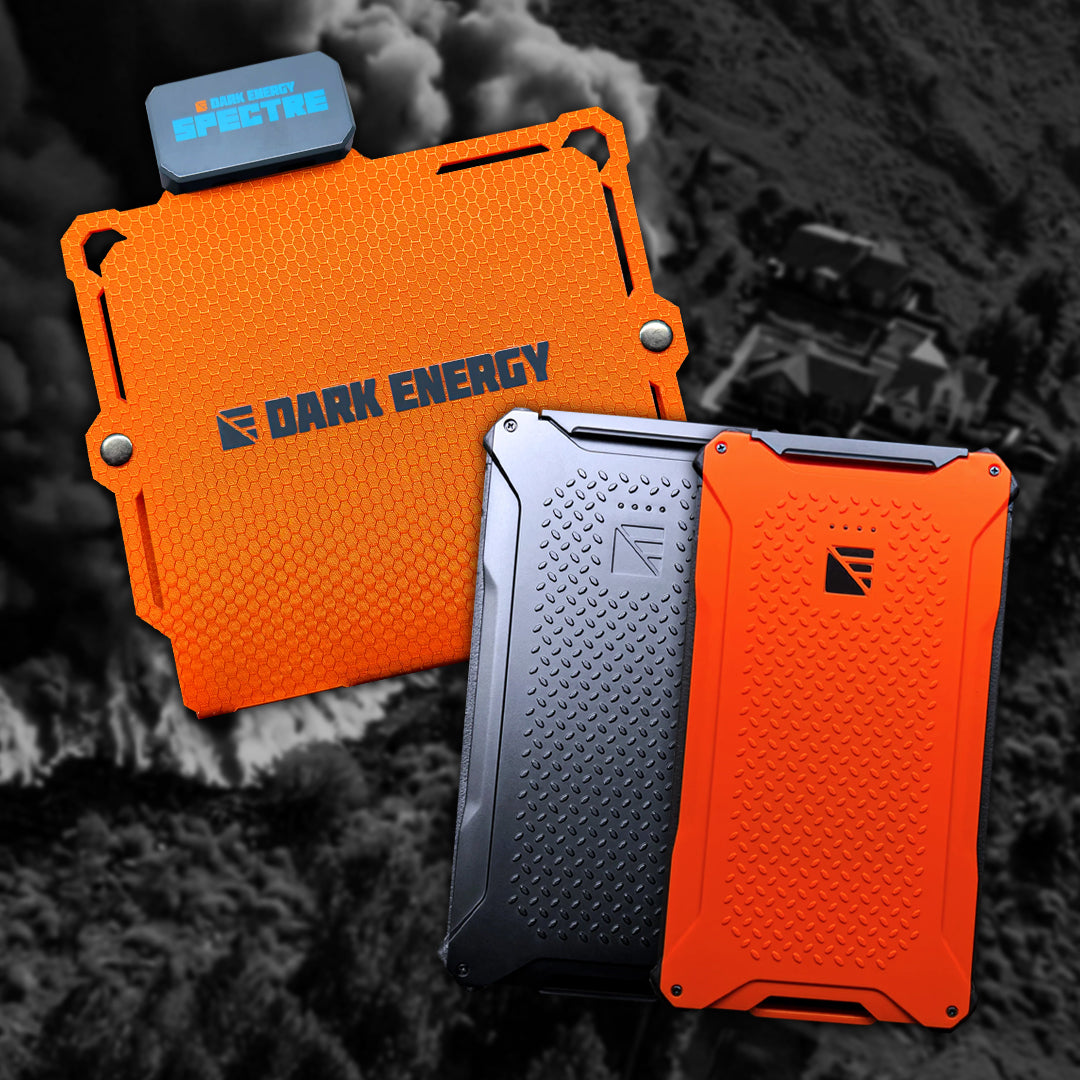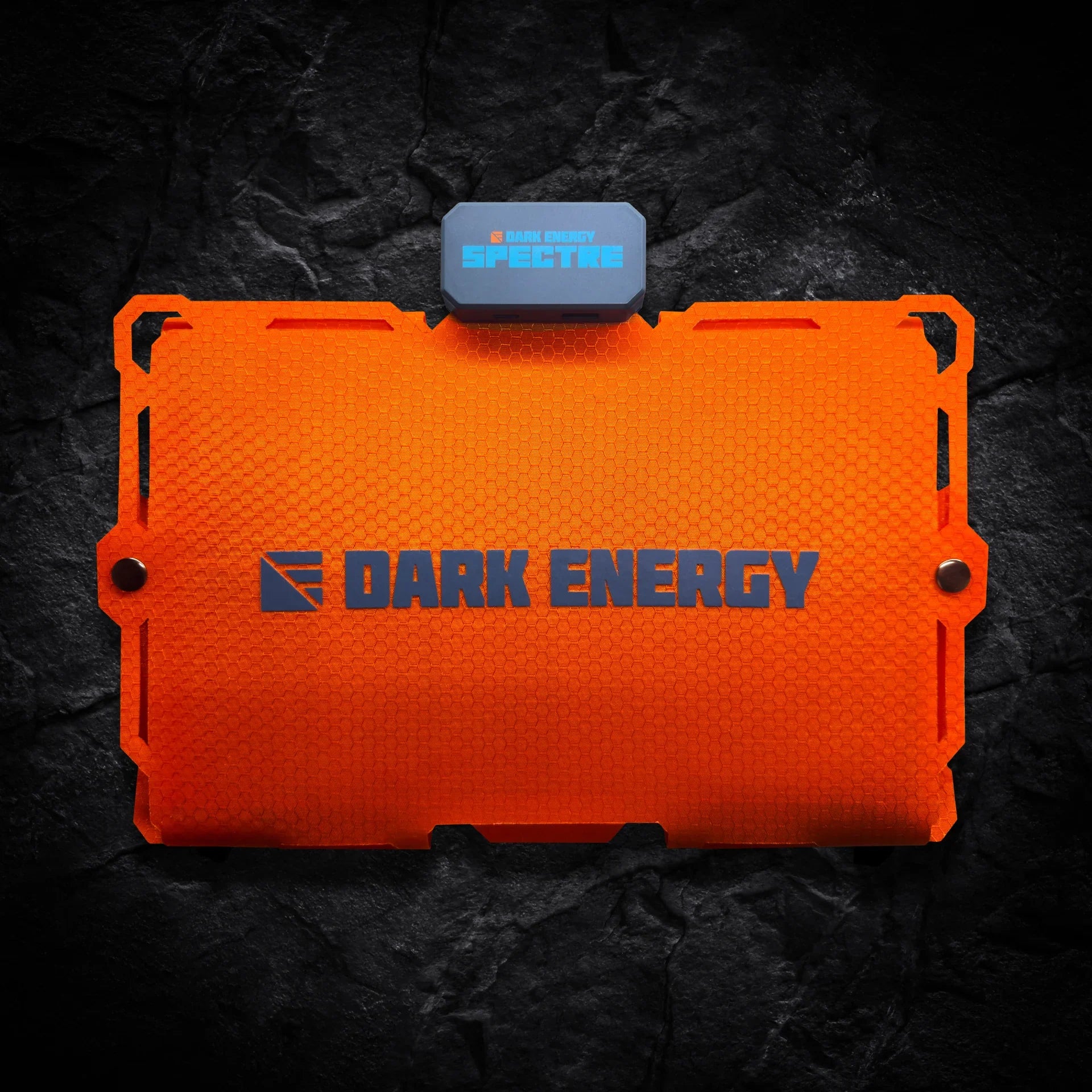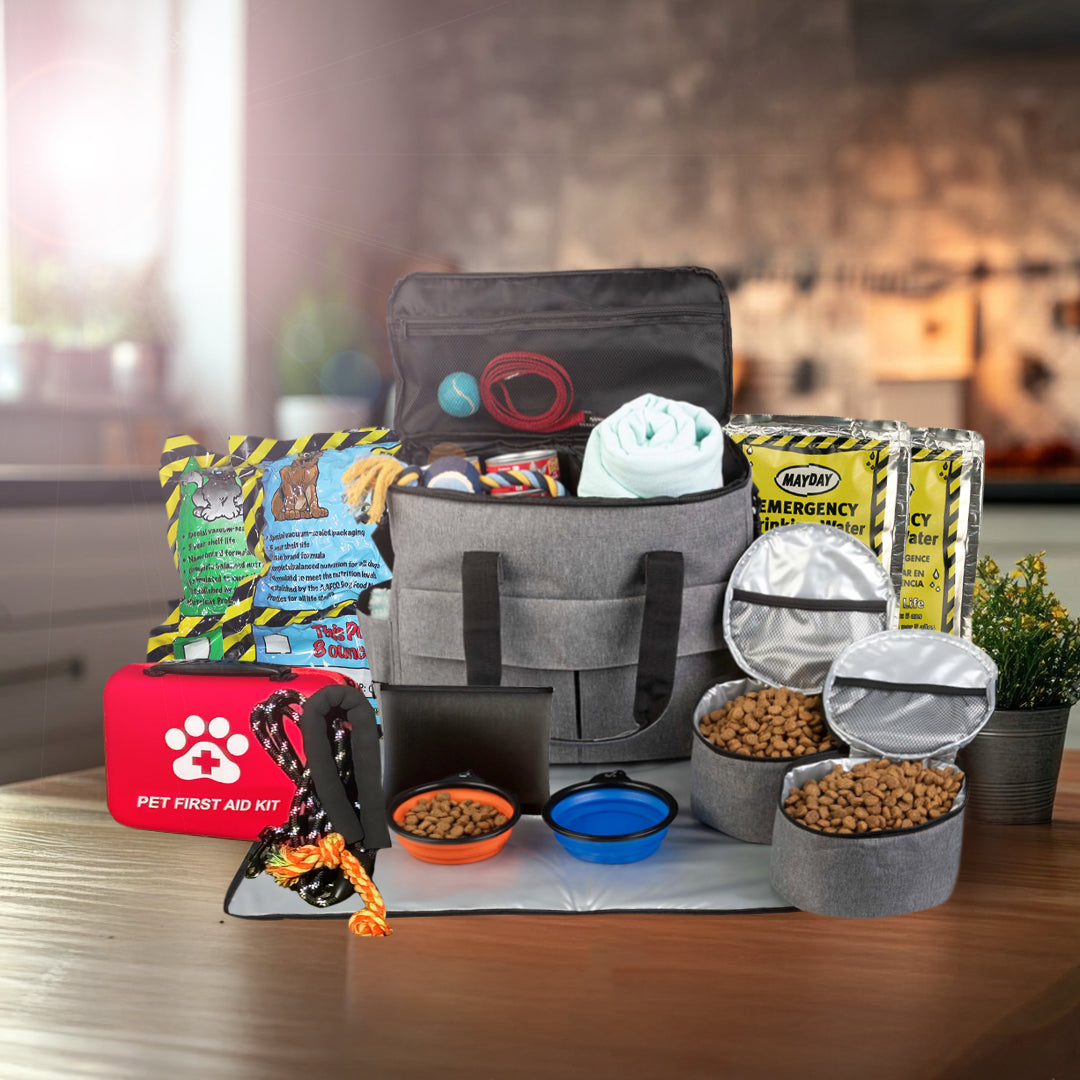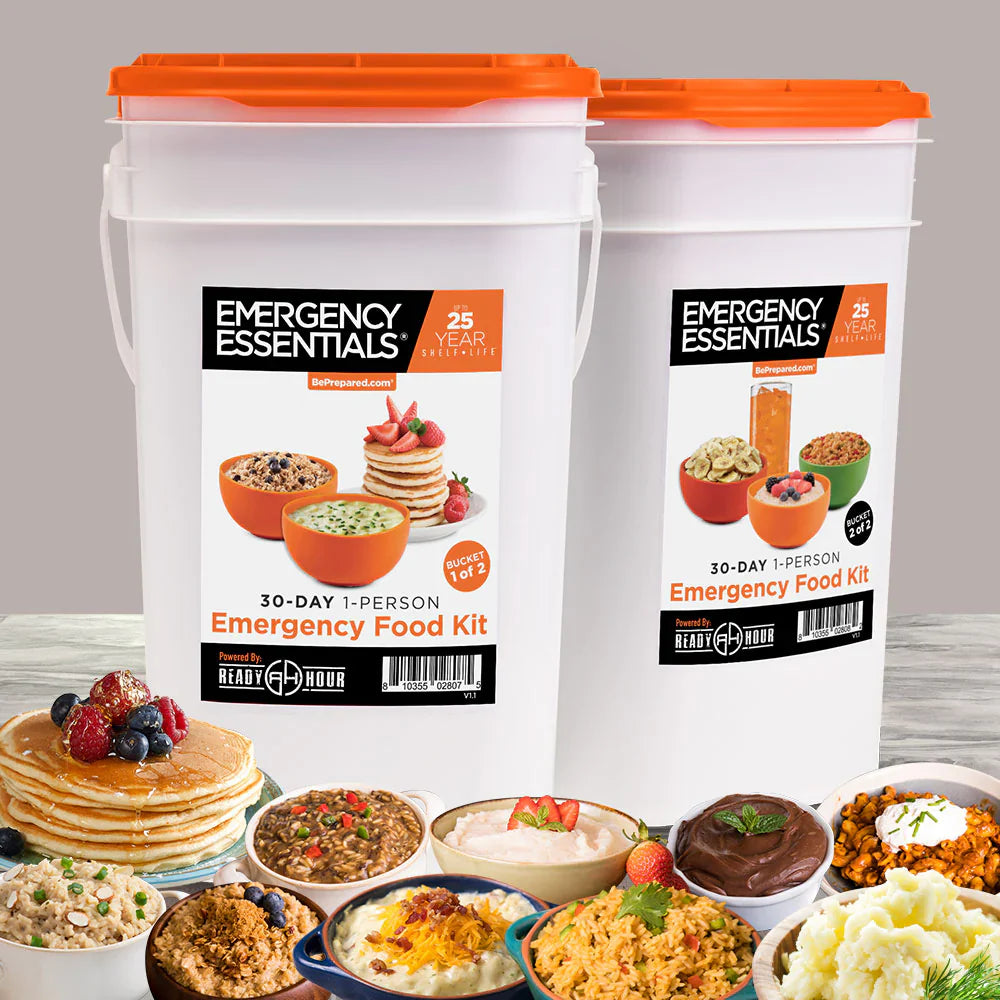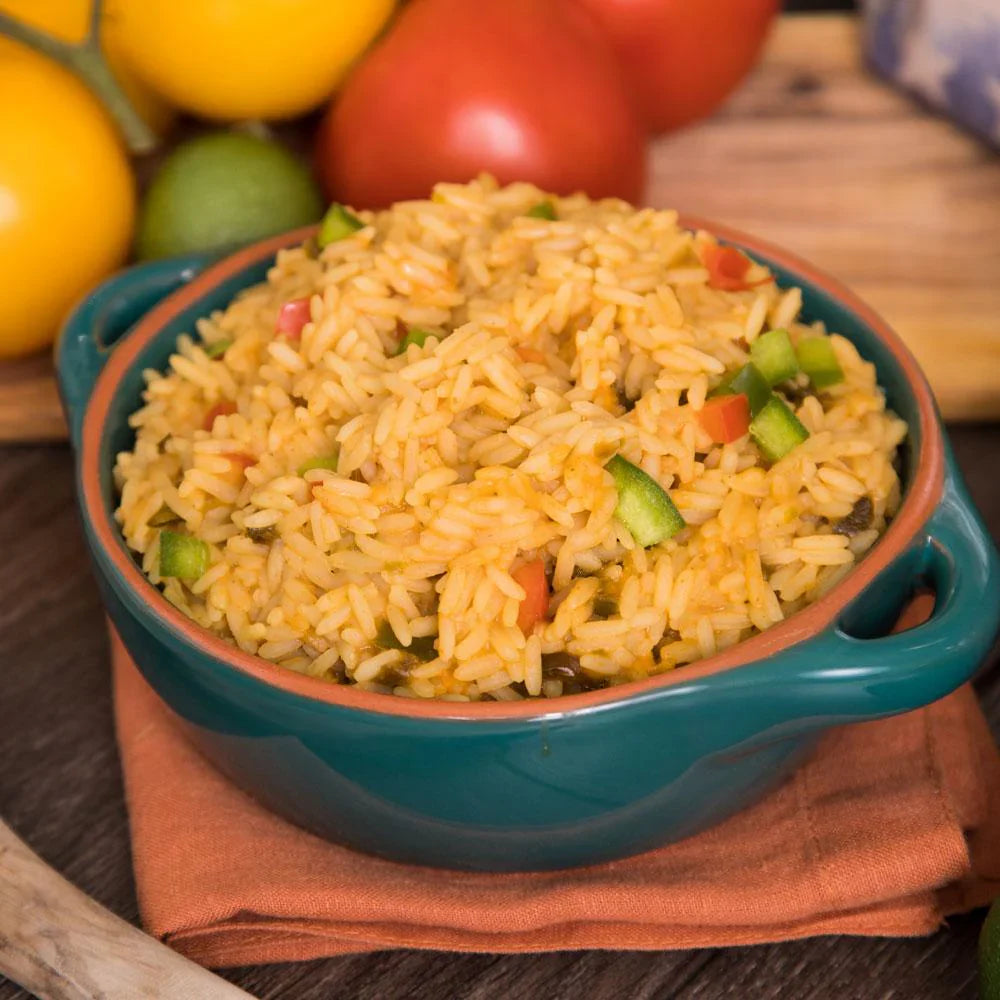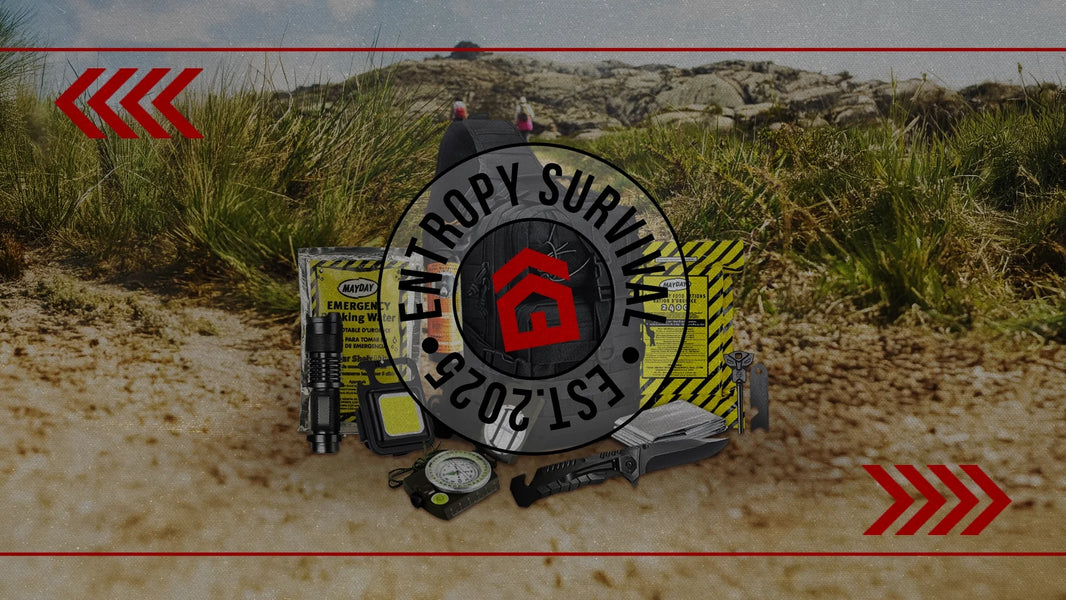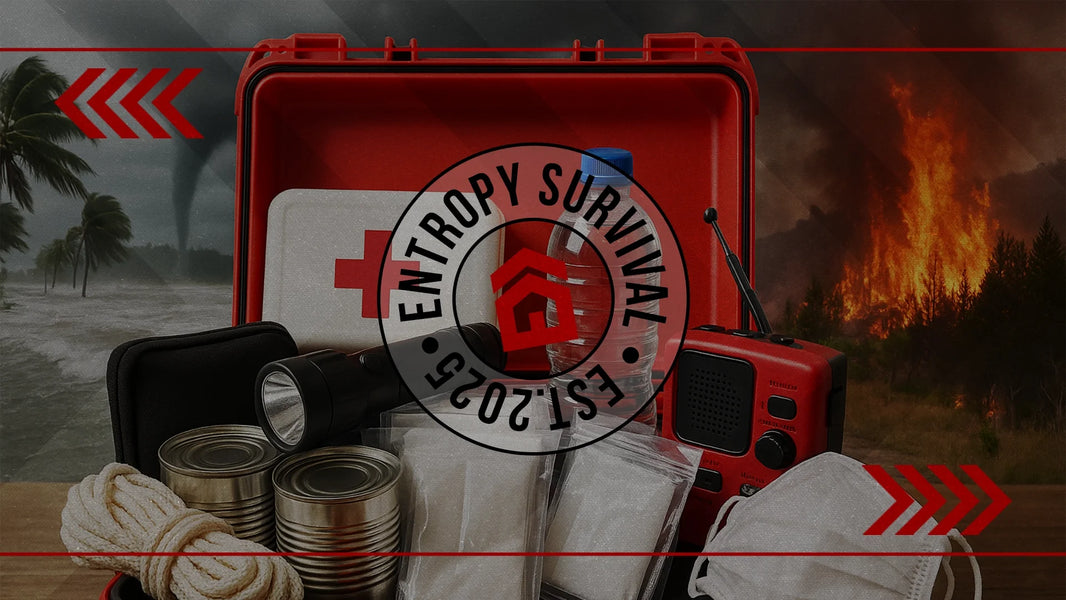When most people think about emergency preparedness, they focus on food storage, first aid supplies, and shelter. But there's one critical element that often gets overlooked until it's too late: reliable transportation when conventional roads become impassable. That's where the Mahindra Roxor enters the conversation as potentially the most practical bug out vehicle you've never considered.
At Entropy Survival, our Army veteran leadership understands that true preparedness extends far beyond stockpiling supplies. Having served in environments where reliable transportation meant the difference between mission success and failure, we recognize that a well-chosen vehicle can be the cornerstone of your entire emergency response strategy. The Mahindra Roxor represents exactly the kind of practical, military-inspired solution that serious preppers should be evaluating.
Why the Mahindra Roxor Stands Apart in Emergency Preparedness
The Roxor isn't just another side-by-side utility vehicle competing with recreational off-road toys. This machine traces its lineage directly back to the original Willys Jeep design that helped win World War II. When Mahindra licensed the Willys design in 1947, they weren't just buying blueprints; they were inheriting decades of battlefield-tested engineering that prioritized reliability, simplicity, and functionality over creature comforts.
What makes this heritage particularly relevant for emergency preparedness is that the original Jeep design solved the same fundamental challenges that modern preppers face: how to move people and critical supplies across compromised terrain using minimal fuel and maintenance requirements. The Roxor delivers these capabilities using a proven 2.5-liter turbo-diesel engine that can achieve 32 to 34 miles per gallon while hauling up to 3,490 pounds of cargo.
Consider what happens during typical emergency scenarios. Hurricane evacuations create traffic nightmares on major highways while flooding makes secondary roads impassable. Wildfires can close entire regions to conventional traffic while creating detours that add hundreds of miles to escape routes. Earthquakes damage bridges and overpasses, forcing evacuees onto surface streets that may be blocked by debris. In all these situations, having a vehicle that can leave the pavement entirely changes your options dramatically.
The Roxor's diesel engine provides particular advantages during extended emergencies. Diesel fuel generally stores longer than gasoline, burns more efficiently, and is often available when gas stations have run dry. During Hurricane Katrina, many preppers discovered that diesel generators and vehicles could run longer on stored fuel, extending their operational capabilities well beyond what gasoline-powered alternatives could provide.
Understanding the Bug Out Vehicle Requirements
Effective bug out vehicles must balance seemingly contradictory requirements. They need to be reliable enough for daily use but rugged enough for emergency conditions. They should be fuel-efficient for long-distance travel but powerful enough to handle heavy loads. Most importantly, they must be simple enough to maintain and repair without specialized equipment or dealer service networks.
The Roxor excels in this balance because it was designed for working environments rather than recreational applications. While other side-by-sides prioritize speed and flashy features, the Roxor focuses on the unglamorous characteristics that matter during extended use: a steel body that can absorb impacts without cracking like fiberglass alternatives, a boxed steel frame that won't twist under heavy loads, and mechanical systems simple enough to troubleshoot without computer diagnostics.
This simplicity becomes crucial when you're operating far from civilization or during extended power outages that shut down computerized repair facilities. The Roxor uses straightforward mechanical systems including recirculating-ball steering gear and a two-speed transfer case that share DNA with 1940s designs. While this might seem outdated, it means these components can be understood, maintained, and repaired using basic tools and mechanical knowledge.
The vehicle's 3,490-pound towing capacity deserves particular attention from preparedness-minded individuals. This capability allows you to haul a loaded trailer containing your entire emergency supply cache, effectively turning your bug out vehicle into a mobile command center. Whether you're evacuating to a remote property or establishing a temporary base camp, having the ability to bring substantial supplies makes the difference between short-term survival and long-term sustainability.
Fuel efficiency remains critical for bug out scenarios where refueling opportunities may be limited or nonexistent. The Roxor's diesel engine delivers over 350 miles of range on a single tank, providing the ability to reach distant safe areas without depending on fuel infrastructure that may be compromised during emergencies. This range, combined with diesel's superior storage characteristics, means you can maintain several hundred miles of emergency mobility using stored fuel.
Military Heritage Meets Modern Preparedness
The connection between military vehicle design and civilian emergency preparedness runs deeper than mere aesthetics. Military vehicles are engineered to operate in hostile environments with limited logistical support, exactly the conditions that characterize major disasters and emergencies. The Roxor's Willys Jeep ancestry means it inherited design philosophies that prioritize mission completion over comfort.
During World War II, the original Willys Jeep earned its reputation by keeping Allied forces mobile across some of the most challenging terrain on Earth. From the beaches of Normandy to the jungles of the Pacific, these vehicles proved that simple, robust design could outperform more sophisticated alternatives when conditions became extreme. The same engineering principles that made those wartime vehicles legendary continue to serve preparedness applications today.
Modern military vehicles have become increasingly complex and expensive, pricing them out of civilian budgets while making field maintenance nearly impossible without specialized tools and training. The Roxor represents a return to the fundamental concepts that made military vehicles effective: reliability through simplicity, durability through overbuilding, and maintainability through straightforward design.
This military heritage resonates particularly well with the veteran community that forms a significant portion of the preparedness movement. Veterans understand that fancy equipment becomes useless when supply chains break down and maintenance becomes impossible. They've experienced firsthand how simple, reliable equipment can mean the difference between success and catastrophe when conventional support systems fail.
At Entropy Survival, our veteran leadership brings this military perspective to civilian emergency preparedness. We understand that the most sophisticated emergency equipment becomes worthless if it can't be maintained and operated under stress. The Roxor's military-inspired design philosophy aligns perfectly with our approach to preparedness: invest in proven solutions that work reliably when everything else fails.
Real-World Applications for Emergency Scenarios
The true test of any emergency preparedness equipment comes during actual emergencies, and the Roxor's design makes it particularly well-suited for the challenges that characterize different types of disasters. Understanding how this vehicle performs across various emergency scenarios helps clarify its value proposition for serious preppers.
Wildfire evacuations represent one of the most demanding challenges for bug out vehicles. These emergencies often develop rapidly, creating massive traffic jams on limited evacuation routes while smoke reduces visibility to dangerous levels. The Roxor's ability to travel off-road opens alternate evacuation paths that bypass clogged highways, while its steel construction provides protection from flying embers that could damage more conventional vehicles.
The vehicle's ground clearance and four-wheel-drive capabilities become particularly valuable when evacuating through areas where fire retardant chemicals have been dropped. These slippery substances can make conventional roads treacherous, but the Roxor's aggressive tires and traction control systems maintain mobility even in challenging conditions. The diesel engine's efficiency means you can carry additional fuel for extended evacuations without weight penalties that would affect other vehicles.
Flood scenarios present different challenges that play to the Roxor's strengths. Its elevated air intake system allows operation in deeper water than most conventional vehicles, while drain plugs in the floor simplify cleanup after exposure to contaminated flood water. The vehicle's utility-focused design means it can handle the heavy, muddy conditions that characterize post-flood recovery operations.
During winter storms and extended power outages, the Roxor's diesel engine provides advantages that gasoline alternatives cannot match. Diesel fuel gels at much lower temperatures than gasoline, but it can still be operated safely in conditions that would strand gasoline-powered vehicles. The vehicle's heating system works independently of the electrical grid, providing both transportation and mobile shelter during extended cold weather emergencies.
Perhaps most importantly, the Roxor excels in the recovery and rebuilding phases that follow major disasters. Its cargo capacity and towing ability make it ideal for hauling building materials, generators, and other equipment needed to restore damaged properties. The ability to operate these recovery operations without depending on damaged road infrastructure accelerates the return to normal conditions.
Integration with Comprehensive Preparedness Planning
The most effective emergency preparedness strategies integrate individual components into comprehensive systems where each element supports and amplifies the others. The Roxor's value extends beyond simple transportation to encompass mobile power generation, supply transport, and operational base capabilities that enhance your entire preparedness infrastructure.
When equipped with a trailer and proper accessories, the Roxor transforms into a mobile emergency operations center capable of supporting extended off-grid operations. Its electrical system can power communications equipment, charging stations for essential electronics, and lighting for emergency repairs. The vehicle's cargo area accommodates portable generators, water filtration systems, and other equipment that would be impossible to transport on foot.
This mobile capability becomes particularly valuable when your primary shelter becomes compromised. Rather than attempting to defend a fixed location against approaching threats, the Roxor enables strategic mobility that allows you to relocate your entire operation to safer areas. This flexibility can mean the difference between riding out a disaster and evacuating to better conditions before situations become desperate.
The vehicle's maintenance and fuel requirements align well with broader preparedness stockpiling strategies. Diesel fuel serves double duty for backup generators and heating systems, while basic mechanical tools can service both the Roxor and other equipment in your preparedness inventory. This standardization reduces the complexity and cost of maintaining comprehensive emergency capabilities.
Storage considerations also favor the Roxor's utility-focused design. Unlike recreational vehicles that require covered storage to preserve their appearance, the Roxor's working-vehicle construction allows outdoor storage using simple covers or shelters. This reduces the infrastructure requirements for maintaining emergency transportation while keeping the vehicle readily accessible when conditions deteriorate rapidly.
Practical Considerations for Preparedness Applications
Successful emergency preparedness requires balancing ideal solutions with practical constraints including budgets, storage space, and local regulations. The Roxor addresses many of these practical considerations better than alternative emergency transportation options, though it does require careful planning to maximize its preparedness value.
Cost considerations favor the Roxor compared to purpose-built military surplus vehicles or expensive four-wheel-drive trucks configured for serious off-road use. Starting around $22,000 for basic models, the Roxor delivers genuine off-road capability at a fraction of the cost of comparable military vehicles, while avoiding the maintenance nightmares that plague aging surplus equipment.
The vehicle's size and weight make it suitable for standard trailer transport, enabling relocation to remote properties or emergency shelters without requiring specialized transport equipment. This portability becomes valuable when your primary residence may not be the optimal location for riding out specific types of emergencies.
Legal considerations vary significantly by location, as the Roxor is classified as an off-highway vehicle rather than a street-legal automobile. This classification restricts its use on public roads in some areas, though many rural regions allow off-highway vehicles on secondary roads and private property. Understanding local regulations helps determine how the Roxor fits into your specific emergency transportation plans.
Maintenance requirements align well with preparedness planning timelines, as the Roxor's diesel engine and mechanical systems require less frequent service than high-performance recreational vehicles. This reliability reduces the risk of equipment failure during extended emergencies while minimizing the maintenance supplies that must be stockpiled for vehicle support.
Insurance and registration costs typically run lower for off-highway vehicles compared to street-legal alternatives, reducing the ongoing costs of maintaining emergency transportation capabilities. Many preparedness-minded individuals find that the Roxor's utility justifies its costs even when not actively preparing for emergencies, making it easier to maintain the vehicle in ready condition.
Building Your Mobile Emergency Response System
The most effective approach to emergency transportation involves building systematic capabilities rather than simply purchasing individual pieces of equipment. The Roxor serves as an excellent foundation for a mobile emergency response system, but maximizing its value requires careful integration with supporting equipment and supplies.
Essential modifications for preparedness applications include auxiliary fuel storage to extend operational range well beyond the vehicle's standard 350-mile capability. Jerry cans and auxiliary tank systems can double or triple this range, providing the ability to reach distant safe areas or operate for extended periods without refueling opportunities.
Communications equipment transforms the Roxor into a mobile command center capable of maintaining contact with emergency services, family members, and mutual aid networks. Ham radio systems, satellite communicators, and cellular boosters extend communication capabilities far beyond what portable equipment can provide while offering the electrical power needed to operate these systems continuously.
Cargo organization systems maximize the vehicle's load-carrying capabilities while ensuring that critical supplies remain accessible and secure during transport. Purpose-built storage solutions protect sensitive equipment from shock and weather while organizing supplies for rapid deployment when reaching your destination.
Tool and repair kits specifically configured for the Roxor ensure that mechanical problems don't strand you during emergencies when professional repair services may be unavailable. Understanding the vehicle's mechanical systems and maintaining appropriate spare parts extends operational capabilities during extended emergencies.
The Roxor's towing capabilities open additional possibilities for mobile preparedness systems. Specialized trailers can carry water storage systems, portable shelters, additional fuel supplies, or even small boats for water crossing capabilities. This modular approach allows customization for specific threats and operational requirements.
Integration with Broader Preparedness Philosophy
At Entropy Survival, we've learned that the most effective preparedness strategies combine proven traditional solutions with modern innovations that enhance rather than complicate basic capabilities. The Roxor exemplifies this philosophy by delivering modern reliability and efficiency through time-tested design concepts that have proven themselves across decades of challenging applications.
The vehicle's working-class design ethos aligns perfectly with practical preparedness approaches that emphasize function over form. While other manufacturers chase recreational markets with increasingly complex features and flashy styling, Mahindra focused on building a tool that works reliably day after day, year after year, regardless of conditions.
This reliability-focused approach resonates with veterans and other experienced preppers who understand that complexity becomes a liability when support systems fail. The Roxor's straightforward design means fewer things can break, and when problems do occur, they can usually be diagnosed and repaired using basic mechanical skills and common tools.
The military heritage that influences the Roxor's design connects directly to the veteran experience that shapes Entropy Survival's approach to emergency preparedness. Military service teaches that the best equipment is the equipment you can depend on when everything else goes wrong, and the Roxor delivers this dependability through proven engineering rather than marketing promises.
Perhaps most importantly, the Roxor represents an active rather than passive approach to emergency preparedness. Rather than simply stockpiling supplies and hoping disasters pass quickly, the vehicle enables proactive responses that can improve outcomes through strategic mobility and enhanced operational capabilities.
Looking Beyond Transportation to Total Preparedness
The decision to invest in a vehicle like the Roxor represents more than choosing emergency transportation; it reflects a comprehensive approach to preparedness that acknowledges the interconnected nature of modern disasters and the need for flexible, adaptable responses that can evolve as situations develop.
Modern emergency scenarios rarely unfold as single, isolated events. Instead, they tend to cascade through interconnected systems, creating secondary and tertiary effects that can be more challenging than the initial disaster. The mobility that the Roxor provides becomes valuable not just for initial evacuation, but for ongoing adaptation to changing conditions throughout extended emergency periods.
Climate change and increasing urbanization are creating disaster scenarios that exceed the capacity of traditional emergency response systems. When professional emergency services become overwhelmed, individuals and families must be prepared to handle their own safety and security for extended periods. The Roxor's capabilities support this self-reliance by providing the mobility and cargo capacity needed to sustain independent operations.
The social and psychological benefits of maintaining mobility during emergencies shouldn't be underestimated. The ability to relocate to better conditions, assist family members and neighbors, or simply escape the claustrophobic feeling of being trapped can have significant impacts on mental health and decision-making capabilities during high-stress situations.
Building comprehensive preparedness capabilities around vehicles like the Roxor also strengthens community resilience by creating resources that can be shared during widespread emergencies. When multiple families in an area maintain complementary preparedness capabilities, the entire community becomes more resilient and better able to support recovery operations.
Conclusion: Mobility as a Force Multiplier
The Mahindra Roxor represents more than just another off-road vehicle option; it embodies a philosophy of preparedness that values proven solutions over flashy innovations, reliability over complexity, and practical capability over theoretical performance. For families and individuals serious about emergency preparedness, the Roxor offers a unique combination of military-inspired durability, civilian practicality, and operational flexibility that can serve as the foundation for comprehensive emergency response capabilities.
The vehicle's diesel efficiency, substantial cargo capacity, and genuine off-road mobility create opportunities for preparedness strategies that extend far beyond what foot-mobile or highway-dependent alternatives can provide. Whether evacuating from immediate threats, establishing remote operational bases, or supporting community recovery efforts, the Roxor delivers capabilities that can transform your family's emergency response options.
At Entropy Survival, we understand that true preparedness requires more than just accumulating supplies; it demands building integrated systems that work reliably when conventional infrastructure fails. The Roxor fits perfectly into this systems approach by providing the mobility platform that connects all your other preparedness investments into a coherent, deployable capability.
The military heritage that shapes the Roxor's design philosophy aligns with our veteran-led approach to emergency preparedness. We've learned through experience that the equipment you can depend on when everything goes wrong is always simpler, more robust, and more reliable than you initially think you need. The Roxor delivers these characteristics while remaining practical enough for daily use and affordable enough for realistic budgets.
When disaster strikes, your response options depend entirely on the capabilities you've built before the emergency begins. The Mahindra Roxor offers a proven, practical foundation for building the mobile capabilities that can keep your family safe, supplied, and strategically positioned regardless of what challenges arise. In a world where the only constant is change, mobility remains the ultimate force multiplier for preparedness planning.
Make sure to check out more articles in our News & Views section. Feel free to reach out any time to see how Entropy Survival can help you prepare you and your family for any disaster or survival scenario.
Ready to build comprehensive emergency preparedness that combines reliable transportation with expert-curated survival supplies? Discover how Entropy Survival's emergency kits complement the mobile capabilities that provide real security when conventional systems fail.


